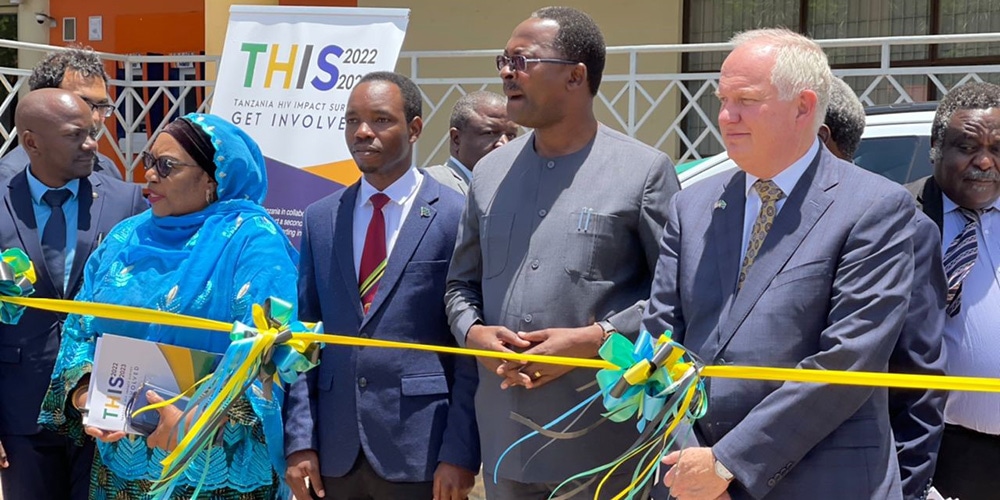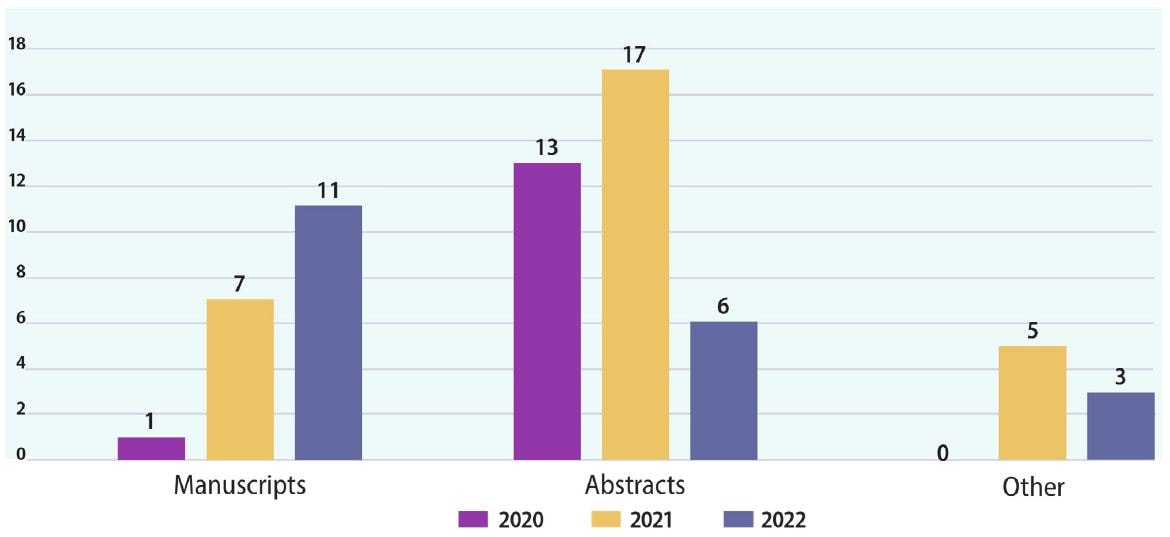Enhancing Public Health Science

Tanzania HIV Impact Survey
The Joint United Nations Programme on HIV/AIDS (UNAIDS) established the 95-95-95 targets calling for 95% of all people living with HIV to know their HIV status, 95% of all people with diagnosed HIV infection to receive sustained antiretroviral therapy, and 95% of all people receiving antiretroviral therapy to have viral suppression by 2030. The Population-based HIV Impact Assessment (PHIA) was established in 2014 to measure progress toward these targets. The first PHIA in Tanzania, the Tanzania HIV Impact Survey (THIS 2016- 2017), caused a shift in national HIV policy toward multi-month medication dispensing, community antiretroviral therapy distribution, HIV self-testing, and preexposure prophylaxis (PrEP) scale-up.
The second PHIA, Tanzania HIV Impact Survey (THIS) 2022-2023, was launched by the Government of Tanzania (GoT) and U.S. Ambassador Donald J. Wright in September 2022 in Mwanza, Tanzania, and by Deputy Chief of Mission Robert Raines in October 2022 in Zanzibar. THIS 2022-2023 is supported with funding from PEPFAR and implemented by CDC, ICAP at Columbia University, and the (GoT). CDC leads all technical aspects including, planning, development, implementation, and analysis. THIS 2022-2023 will assess the country’s current HIV epidemic status, and the findings will guide the re-calibration of HIV programs and interventions, policies, and funding priorities. Approximately 20,000 households will be interviewed, covering 40,000 adults 15 years and older from all 31 regions of mainland Tanzania and Zanzibar. The survey will also contribute crucial information on communicable diseases like tuberculosis, hepatitis B and C, and COVID-19, as well as non-communicable diseases. Results from THIS 2022-2023 are vital to inform more targeted HIV programming, policy, and funding allocation to attain the UNAIDS 95-95-95 targets and ultimately control the HIV epidemic in Tanzania.
Bio-behavioral Surveys
Key populations (KP) including female sex workers (FSW) and people who inject drugs (PWID) are known to be marginalized in health care, albeit having a high burden of HIV compared to the general population. Limited information is available on their access to HIV related services, unmet needs, and gaps. Bio-behavioral surveys (BBS) are aimed at providing up-to-date data on HIV burden, service access and utilization, and population size estimation that is needed to support KP services programming and resources allocation. To understand the unique HIV service needs of FSW and PWID within Tanzania, we conducted a BBS using respondent driven sampling in Dodoma, Mbeya, and Mwanza regions. Using an interviewer-administered questionnaire, we collected information on demographics, risk behaviors, uptake, and barriers to access services. Through biomarker testing we estimated HIV and sexually transmitted infections (STI) prevalence. In addition, the BBS measured progress towards the UNAIDS 95-95-95 targets.
The BBS was conducted with the strong leadership of the Ministry of Health in collaboration with Tanzania Commission for AIDS, Muhimbili University for Health and Allied Sciences and the National Institute of Medical Research with technical assistance from CDC and ICAP at Columbia University. Importantly, civil society organizations (CSO) which traditionally do not get opportunity in engagement during surveys, were meaningfully engaged. The success of the survey is largely attributed by the effective engagement of the National Council for People Living with HIV and Key and Vulnerable Population Forums. These CSO formed the Community IBBS Advocacy Team which engaged with the survey team throughout the entire survey including protocol and workplan development, community engagement and outreach, peer counseling, and active linkage to care as appropriate. This in turn strengthened our relationships within these KP communities.
In total, 1,246 FSW and 1,252 PWID participated in the assessment across the three regions. Participants were tested for HIV, syphilis, hepatitis B and C viruses. Results show that despite meeting or exceeding the second and third 95 targets, more intensified data-driven approaches are needed to close the gap on the first 95 target among FSW and PWID. BBS results are already guiding Tanzania programs in enhancing targeted HIV programming to address gaps in providing equitable HIV care and treatment services among FSW and PWID. Moreover, the findings are now being used to update the National Consensus Estimates on Key Population Size and HIV Prevalence in Tanzania, which was last revised in July 2014. Beyond these three regions, the BBS is being expanded to cover Zanzibar, Dar es Salaam, and Arusha. The expanded BBS will also include data from men who have sex with men. With data from the current and expanded BBS, Tanzania is on a path to ensuring that KPs are not left behind in the country’s journey to achieving and sustaining resilient HIV epidemic control.
Table: CDC Tanzania Publications By the Numbers
** Products were either; cleared, accepted and published or presented in different forums; led by CDC-TZ staff or TZ partner. (Data was as of November 1st 2022.)
With the theme of “Putting science and surveillance into public health action for HIV epidemic control in Tanzania,” CDC has highlighted the diverse work of PEPFAR programs, and implementing partners in local and international forums. During the past two years, CDC has tremendously increased its performance and efficiency in different areas, including the volume of scientific information products led, co-led, or overseen by authors from CDC Tanzania, conducting Science Annual Portfolio reviews for three consecutive years, and reducing turnaround time for clearing scientific products. CDC is committed to supporting cutting edge science and surveillance activities to reach HIV epidemic control in Tanzania.

Key Performance Improvements
- Expanded the science and surveillance portfolio with strong programmatic linkages to inform HIV epidemic control
- Increased the volume of scientific information products led, co-led, or overseen by CDC Tanzania
- Real-time tracking and shortening the turnaround time for clearing scientific products
- Improving the quality of products through enhanced engagements and support
